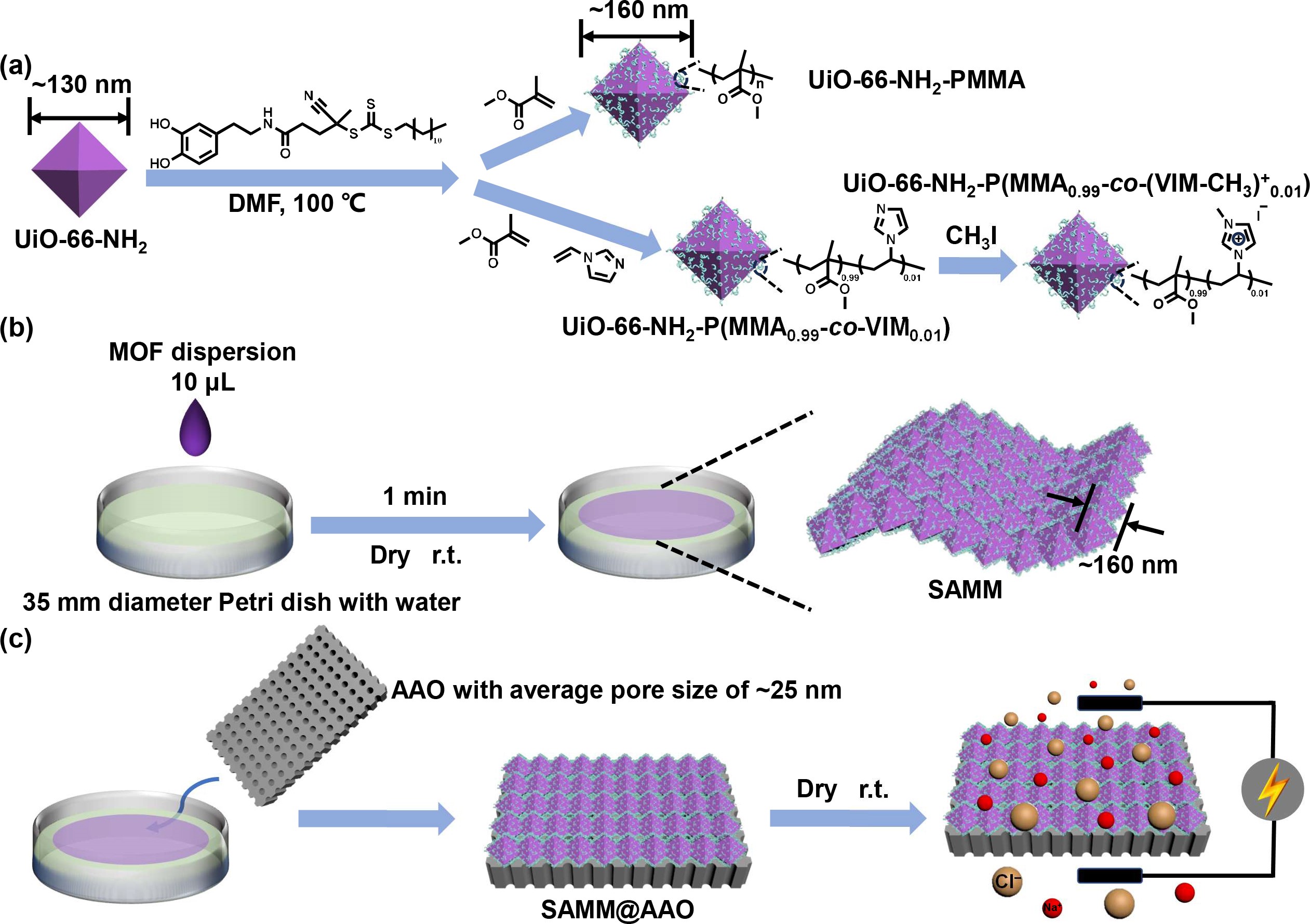Self‐Assembled Nanoporous Metal–Organic Framework Monolayer Film for Osmotic Energy Harvesting
Time:2023-09-27 22:24 Author:Jie Xiao
Jie Xiao, Muyu Cong, Minmin Li, Xin Zhang, Yahui Zhang, Xinjia Zhao, Wenqi Lu, Zhimou Guo, Xinmiao Liang,* and Guangyan Qing*
Adv. Funct. Mater. 2023, DOI: 10.1002/adfm.202307996
https://onlinelibrary.wiley.com/doi/10.1002/adfm.202307996
Osmotic energy derived from the salinity gradient represents a promising energy resource because it is sustainable and environmentally benign. Subnanoscale channels are regarded as a competitive platform for generating this blue energy due to their highly selective and ultrafast ion transport. However, the fabrication of functional angstrom-scale channels capable of high energy output remains challenging. Here, we report a heterogeneous subnanochannel membrane formed by coating a functionalized self-assembled metal−organic framework (MOF) monolayer (SAMM) film on a porous anodic aluminum oxide membrane, is reported. The SAMM film, with a thickness of ≈approximately 160 nm, is fabricated by self-assembly of poly(methyl methacrylate-co-vinylimidazole)-modified UiO-66-NH2 nanoparticles at the water−air interface. In the SAMM, imidazole and NH2 groups provide abundant positive charges, while the angstrom-scale windows act as ionic filters for the selective screening of anions with different hydration diameters. As a result, the heterogeneous membrane exhibits excellent capacity for anion-selective transport, which contributes to an optimal osmotic power of 6.76 W·m−2 under a 100-fold NaCl gradient, as well as a high Cl− /SO4 2− selectivity of ≈approximately 42.2. Furthermore, the output power is increased to 10.5 W·m−2 by methylating imidazole moieties on the MOF surface. This work provides a facile and modular approach to fabricate subnanochannels for enabling highly selective and efficient osmotic energy conversion.
